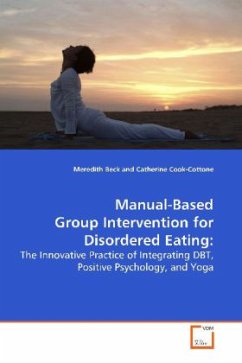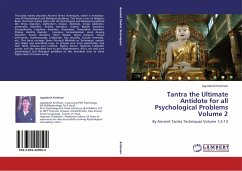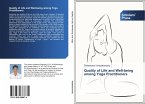This study investigated the efficacy of a manual
based treatment program for eating disorders. The
curriculum was based on empirically validated risk
and protective factors and incorporated interactive
discourse, yoga, and relaxation into eight weekly
sessions. Pre- and post-test data were combined for a
total of 29 female participants(M=21.9 years old),
with an average Body Mass Index (BMI; kg/m2) of
22.66. Findings indicate that participation in the
Yoga and Wellness group positively affects
psychological correlates of eating disorders.
Specifically, main effects were found for
time F (1, 27) = 7.880, p .002 for eating disorder
risk factors of Drive for Thinness(DT), Bulimia (B),
and Body Dissatisfaction (BD).
The Yoga and Wellness program was built from a
cognitive-behavioral, dialectic behavioral, and
positive psychology framework, focusing on wellness
and mind-body connection. The information gained from
data analysis offers empirical evidence for the use
of integrated treatments composed of cognitive
behavioral therapy, dialectical behavior therapy, and
innovative practices such as yoga and meditation.
based treatment program for eating disorders. The
curriculum was based on empirically validated risk
and protective factors and incorporated interactive
discourse, yoga, and relaxation into eight weekly
sessions. Pre- and post-test data were combined for a
total of 29 female participants(M=21.9 years old),
with an average Body Mass Index (BMI; kg/m2) of
22.66. Findings indicate that participation in the
Yoga and Wellness group positively affects
psychological correlates of eating disorders.
Specifically, main effects were found for
time F (1, 27) = 7.880, p .002 for eating disorder
risk factors of Drive for Thinness(DT), Bulimia (B),
and Body Dissatisfaction (BD).
The Yoga and Wellness program was built from a
cognitive-behavioral, dialectic behavioral, and
positive psychology framework, focusing on wellness
and mind-body connection. The information gained from
data analysis offers empirical evidence for the use
of integrated treatments composed of cognitive
behavioral therapy, dialectical behavior therapy, and
innovative practices such as yoga and meditation.








